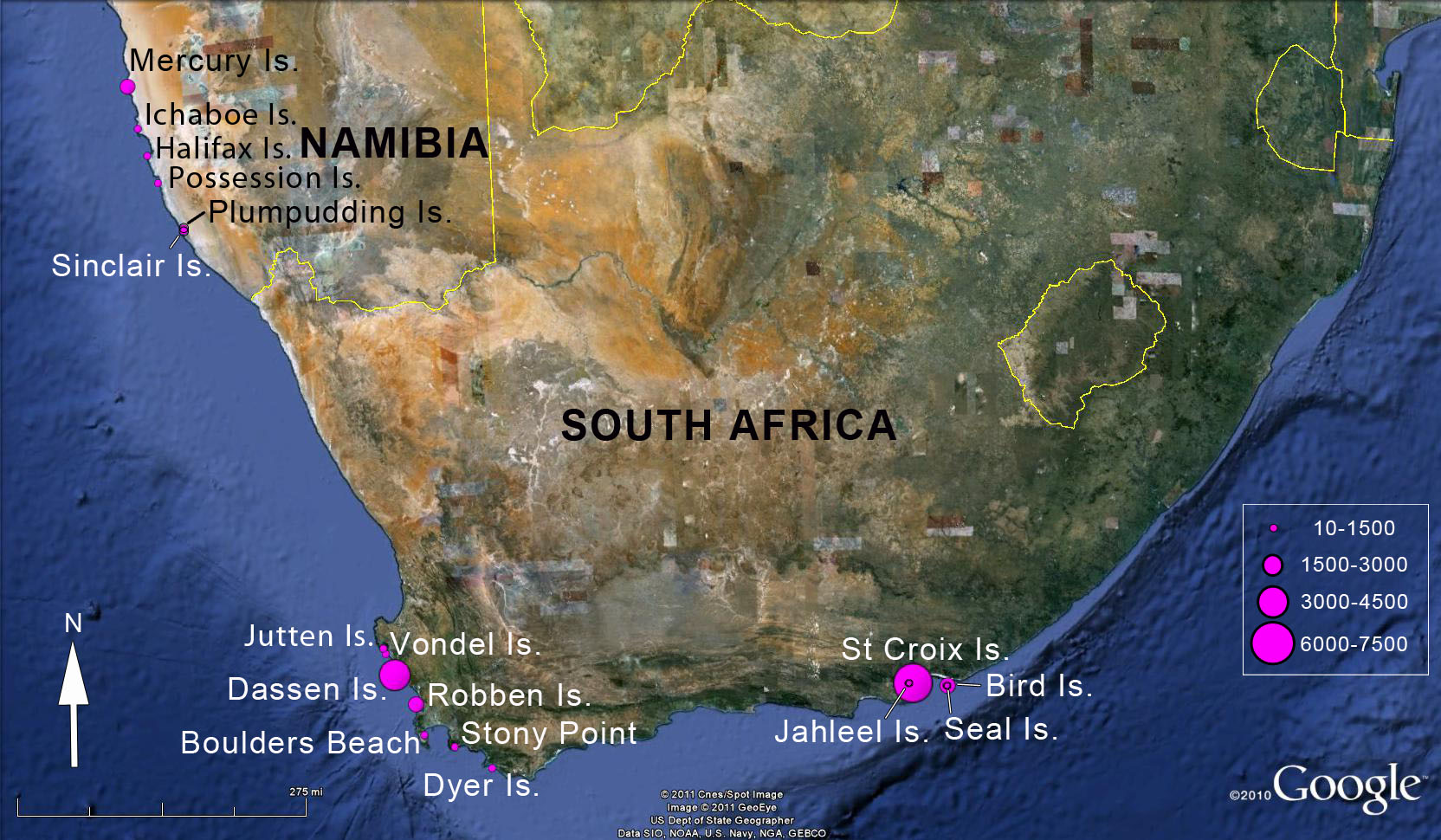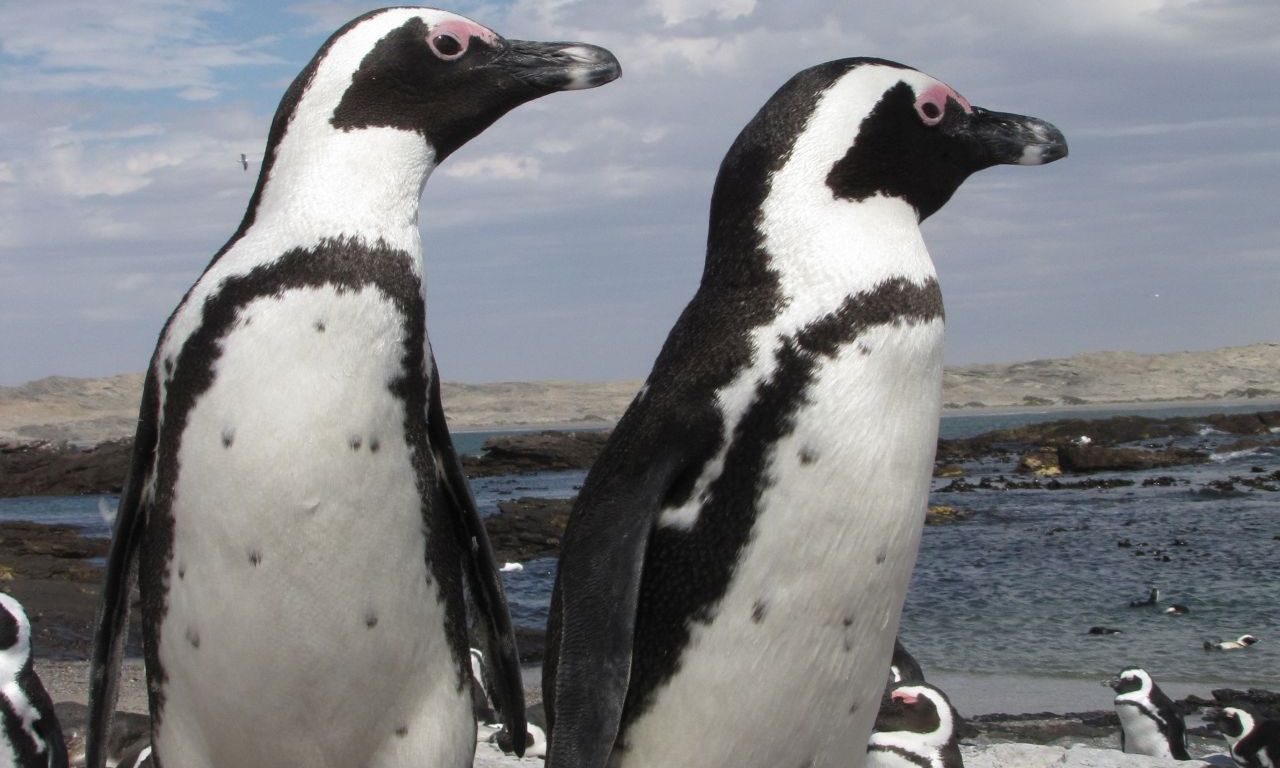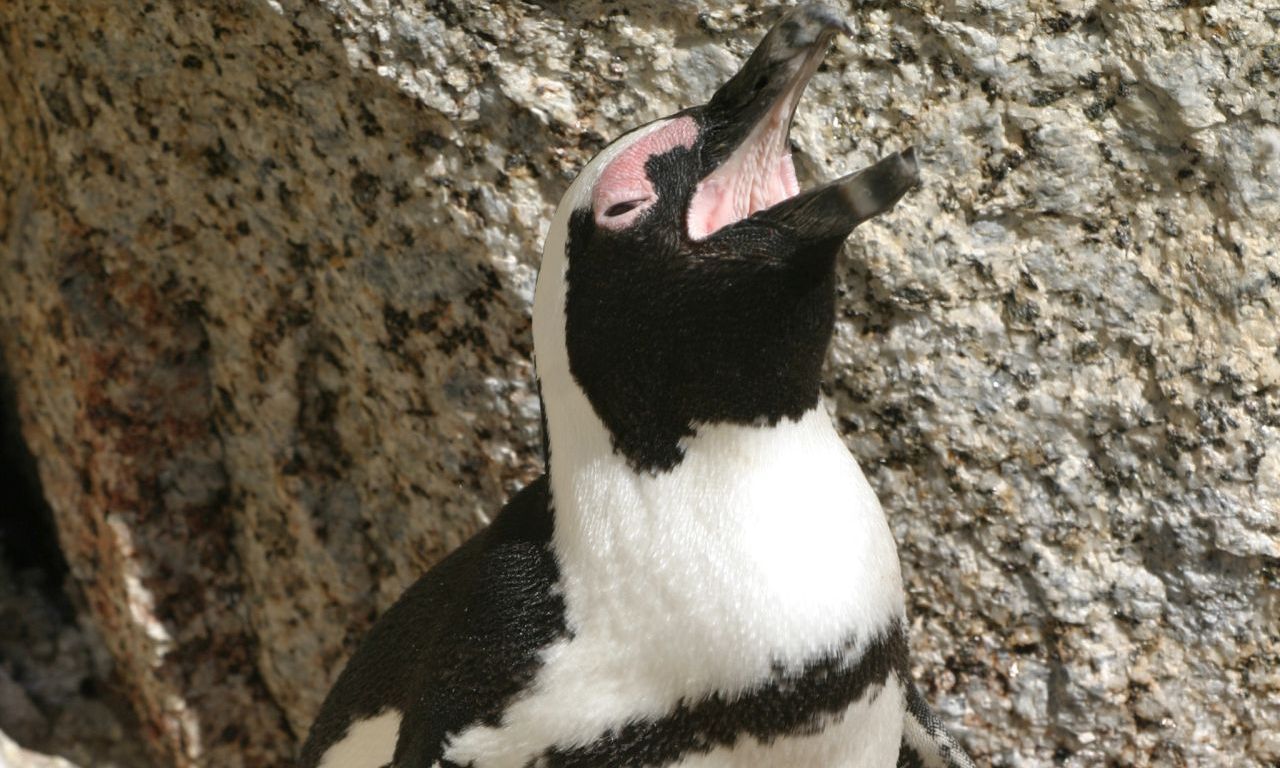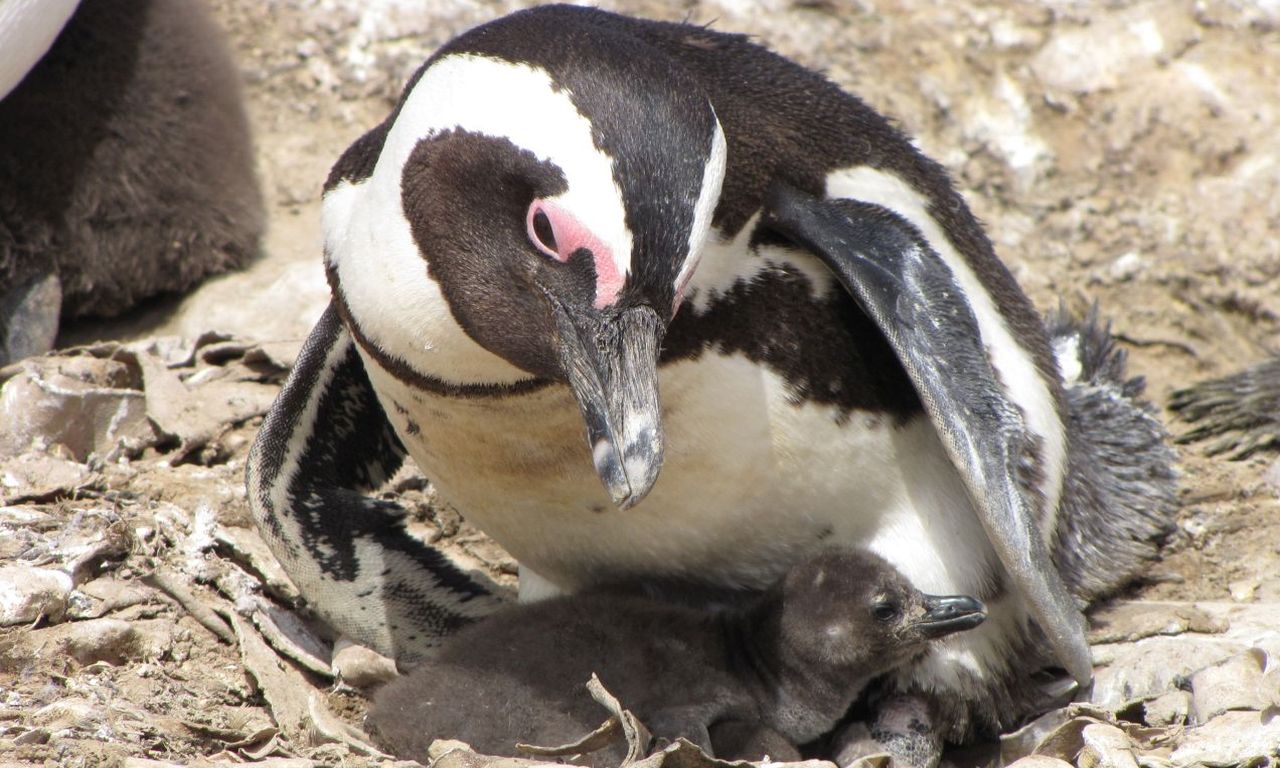African Penguin - Spheniscus demersus
- DESCRIPTION
- 2.96-3.3 Kg. Adults have black face, throat, crown stripe, nape and upperparts, including upper flipper. Underparts mostly white. Broad white supercilium stripe from in front of eye around back of face to neck joins white breast. Black stripe up side of body and across upper breast. Some individuals have a second black band on neck. Variable number of black spots on chest and abdomen. Patch of naked pink skin above eye. Bill black with vertical pale horn band at gonys. Legs and feet black, blotched pink.
- DISTRIBUTION
-
Breeding colonies of African penguins in three regions of South-western coast of
Africa: Namibia in the north and South Africa’s Western and Eastern Cape
Provinces in the south.

- HABITAT
- Marine, nests mostly on rocky offshore islands, either nesting in burrows they excavate themselves in guano or sand, in depressions under bushes, in clefts between rocks, in disused buildings and on the surface, preferably under shade. Nesting material includes seaweed, vegetation, shells, rocks, feathers.
- BREEDING BIOLOGY
- Breeding occurs year-round, with different peaks according to the location. In Namibia, breeding occurs throughout the year, but mostly from July–February. At Dassen Island, egg laying occurs throughout the year but mostly from December–June. Breeding is usually colonial but solitary nests occur. Nests are built by both sexes. The female lays two eggs, and the incubation is made by both sexes during 38-41 days. Chicks fledge when between 55 and 130 days old.
- FEEDING
- Schooling pelagic fish, mainly anchovy Engraulis encrasicolus, sardine Sardinops sagax and, in Namibia, pelagic goby Sufflogobius bibarbatus. Other prey includes cephalopods, horse mackerel (Trachurus capensis) and juvenile hake (Merluccius sp.).
- REPRODUCTIVE POPULATION
- 25,000 pairs.
- Conservation status (IUCN) and threats
- “Endangered” (IUCN Red List 2018), because of a sustained and large decrease in the 20th Century, after 1976 at a rate of 13% per generation. A recent large decrease in South Africa, from 57,000 breeding pairs in 2001 to 21,000 pairs in 2009 has led to a halving of the global population in the 21st century. Breeding population had decreased by > 50% in the three most recent generations and the decrease is continuing. Their main threats are oil pollution, fishery mismanagement, habitat degradation and food availability changes potentially linked to climate change.
- SOURCE
- Crawford, R.J.M., Kemper, J. and Underhill, L.G. 2013. African Penguin (Spheniscus demersus). In PENGUINS: NATURAL HISTORY AND CONSERVATION (García Borboroglu, P.G. and Boersma P.D. eds.) University of Washington Press, Seattle U.S.A. 328 pp.


